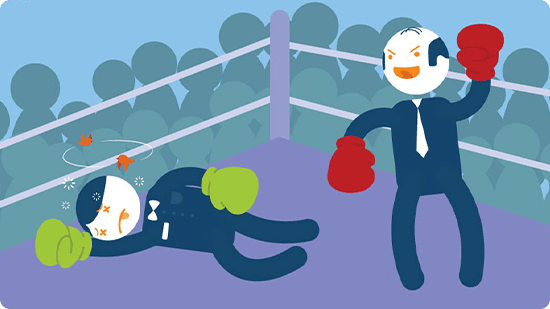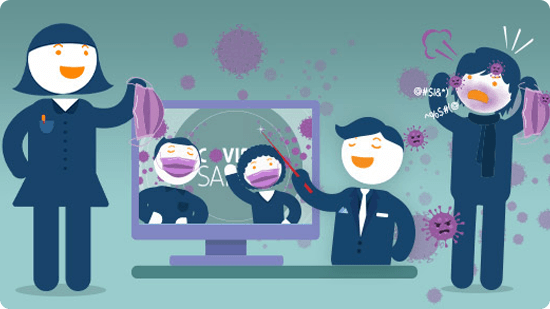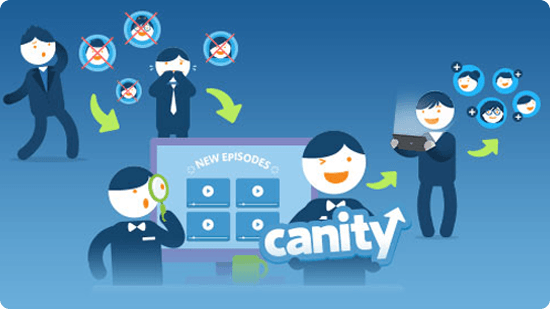If you’ve ever been in a great relationship, which for whatever reason has come to an end, you’ll understand just how difficult it is to find something—or someone—that’s going to give you that same feeling. Unfortunately, in business, this isn’t quite the case. Unless you have a truly unique product or service, the likelihood is that someone else is offering something similar, and they’ll be more than happy to take your customers. So how do you keep the flame alive?
Churn, Baby, Churn!
If you run a business, you’ve probably (definitely should have) heard of the term ‘churn rate.’ According to Investopedia.com, your churn rate (or rate of attrition) is the “…percentage of subscribers to a service who discontinue their subscriptions to that service within a given time period.” If your churn rate is too high, you’ve got a serious problem on your hands, and you need to address it immediately.
Reducing your business’ churn rate is a lot like churning butter – you’re going to have to put in a lot of hard work, but at least your sandwiches will be delicious. Turning the churn around isocials all about the procedures you put in place to increase customer retention. What are you doing that’s going to make customers come back?
Remember, what’s good for your customers is good for business, as it costs a lot more to acquire a new customer as it does to keep an existing one. Here are four steps you can take to help reduce your churn rate and retain customers.
1. Invest In Your Staff
The biggest mistake a business can make is not investing in staff training. No matter how amazing or revolutionary you believe your product or service to be, it isn’t going to sell itself.
In a study conducted by Forum Corporation Research, almost 70% of the identifiable reasons why customers left typical companies had nothing to do with the product. The prevailing reason for switching was poor quality of service.
Even if the product is worse, people will go elsewhere if they know they’ll receive better service. Allow me to shamelessly throw some statistics your way:
• 80% of your company’s future revenue will come from just 20% of your existing customers;
• The probability of selling to an existing customer is 60-70%, whilst the probability of selling to a new client is 5-20%;
• 91% of unhappy customers will not willingly do business with your organisation again.
Customer loyalty is priceless. Make the investment today and reap the benefits tomorrow.
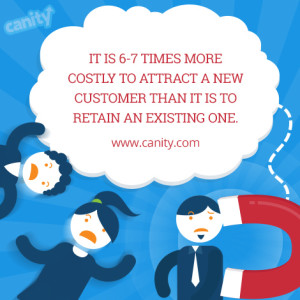
2. Everyone’s a VIP
Businesses often fall into the trap of valuing certain customers more than others. Maybe they spend more money or perhaps they’re just easier to deal with. Invest too much time into an individual customer, and you run the risk of alienating others. Your business doesn’t have a very important person – it has very important people.
Loyalty programs and VIP cards are a great way to retain customers, just as long as they’re accessible to everyone. Don’t believe me? I feel another shameless barrage of statistics coming on. According to Annex Cloud:
• 87% of shoppers say they want loyalty programs;
• There are 2.6 billion loyalty program memberships in the US alone;
• At least once a month, 58% of shoppers make purchases from the companies whose loyalty programs they belong to.
And here’s the real kicker.
• 83% of loyalty program members say that rewards programs make them more likely to continue doing business with a certain brand.
In the eternal words of The Sapphires: “You can’t hurry love. No, you’ll just have to wait. She said love don’t come easy – it’s a game of give and take.”
Give back to your customers and they’ll keep coming back to you.
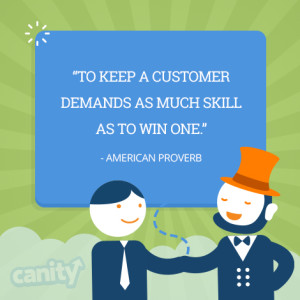
3. Get Social
Social media is everywhere. For good or for bad, you simply can’t avoid it, and it’s rapidly become an integral part of both life and business.
You may think all you have to do to have a positive impact on social media is simply set up a Facebook page or a Twitter account; however, it’s one thing to be present on social media, it’s another to be truly active.
According to a study published by The Association for Customer Loyalty, Loyalty 360, over 25 percent of businesses ranked social media as the most effective channel for customer retention.
If you happen to be in the other 75%, you may not want to look at these statistics from Convince & Convert:
• One-third of all customer complaints are never answered, most of them are on social media;
• Answering a complaint increases customer advocacy by as much as 25%;
• Not answering a complaint decreases customer advocacy by as much as 50%;
• 40% of customers who complain on social media expect a response within one hour.
If you want your customers to connect—and stay connected—to your brand in the physical world, you have to make an effort to connect in the digital one.
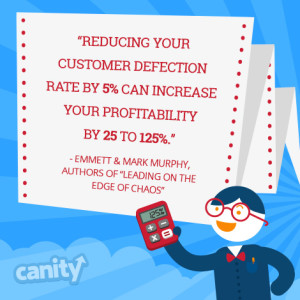
4. Stand for Something
What does your brand stand for? What are its values? If you can’t answer these questions immediately (answering ‘money’ doesn’t count), then you’re going about it all wrong, and I have some more statistics you should take a look at:
• 89% of global consumers take part in activities that address social issues;
• 72% of consumers would recommend a brand that supports a good cause over one that does not;
• 72% of consumers would switch to a similar quality brand if they supported a good cause.
These are the type of statistics that make me feel all warm and fuzzy inside because they show that people care. A huge part of this is feeling good about the products we use, the companies we endorse with our business, and where our money is going.
Think about the last time you bought a bottle of water. Did you choose the bottle with the standard label or did the good in you decide to reach out and grab the bottle with the pink cap?
Show your customers that your business stands for something and they’ll stand alongside you.
Churn Back Time
So, what’s the takeaway from all of this? It’s really rather simple: loyal customers are your business’ greatest asset. New customers are great for business, but getting them to stick around, well, that’s even better, but you’re going to have to work for it.
I’ll leave you with a metaphor: why would you go out for burgers when you have steak at home?




